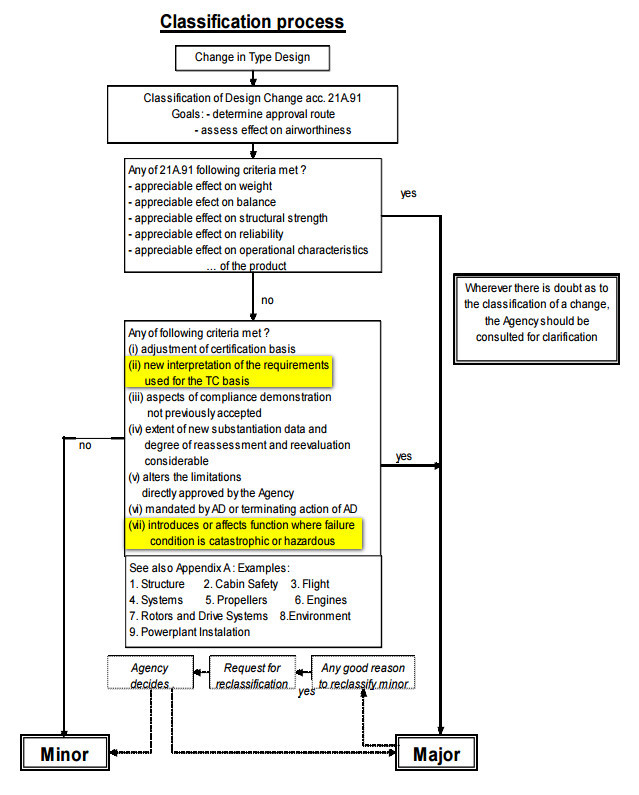That’s a different list you posted this time, Jesse 
And some of it is almost a “velcro job” e.g. the Golze or Flarm products. Little more than the installation of an extra circuit breaker.
The GNS WAAS STC would have cost a few k to the customer who had it originally done and the Part 21 avionics shop then sells it to other avionics shops. That’s if it was done that way; wigglyamp may have done it initially on his own account.
Peter wrote:
The GNS WAAS STC would have cost a few k to the customer who had it originally done and the Part 21 avionics
If it would be a one off STC sure, but that would be the same with an one off FAA STC.
Peter wrote:
the Part 21 avionics shop then sells it to other avionics shops.
In those case the pricing is normally much lower, as the cost are shared over multiple users. This is IMHO the reason why Wigglyamp has asked a couple of times feedback if a certain modification would be interesting. I did ask the same for the Robin – Aspen STC, which is now on its way.
Peter wrote:
That’s a different list you posted this time
Sure, the first list was to show what is possible as a minor change. Custom made STC or minor change for one S/N will always be more expensive then one where data can be re-used. For example with the HF it included mounting an HF antenna, which requires strength calculation and EMC testing. The same for 3D camera systems. These are one offs, and use non aviation equipment, and thus far more design work, then it requires for a mode C to mode S upgrade, that isn’t strange is it?
Again, this would be similair on N reg. If you want an HF transceiver with tuner and antenna in your aircraft, you would need to spend time and thus money on the design. This doesn’t change with EASA or FAA.
Ok, so the WX systems (stormscopes) and TAS systems where all included in the quotation, and wouldn’t be near 1K even including the 290 Euro EASA fee.
Peter wrote:
So IMHO the EASA “minor change” route is meaningless for comparing with the FAA “minor alteration” route – because a customer will judge this according to how much it cost him.
As I said previously, an EASA MINOR change is equivalent to an FAA MAJOR alteration. Both require approved data, In the case of US-aircraft, either approved by the agency via a FSDO-signed Form 337, a DER-signed 8110-3, or for Europe, approved by an EASA Part 21J or directly by EASA.
An FAA MINOR change is equivalent to CS-STAN and in both cases some doccumentation is meant to be raised to justify the decision. For EASA we use the EASA Form 123. The Aircraft Electronics Association produce some excellent guidance for the FAA A/P on determining what he can consider to be acceptable as a Minor change.
An STC is a Major change to type design (not a Major Alteration) and has the same meaning and approval process both in the EU and US. One advantage the US currently has which speeds up the process and reduces costs is the ODA (Organisational Design Approval) such as held by major manufacturers. whereby they can make their own determination of compliance and issue STCs directly using internal processes. A similar process is on the way for Europe.
Cost has no bearing on modification classification. For EASA, the determination of Major/Minor (when it’s definitely outside the scope of CS-STAN) is determined by following the flow-chart in 21A.91:
Thanks, wigglyamp. I found your flow chart here [ local copy ]
Here it is with a couple of areas I highlighted which make me not understand how anything that e.g. drives an autopilot can possibly not be Major

Peter wrote:
Here it is with a couple of areas I highlighted which make me not understand how anything that e.g. drives an autopilot can possibly not be Major
If we take the top highlighted area, then a change to an altimeter doesn’t have any effect on the basic cert basis of the product (the aircraft). It’s still a Part 23 light aircraft and the altimeter change has no effect on the basic design or certification at that level. If we proposed to add floats or different wingtips, then it could impact flight characteristics so that would make the answer YES and push it to an STC
The altimeter does not provide inner loop control to the autopilot (basic attitude stabilisation, pitch/bank limiting, runaway control etc) so doesn’t create a potential hazardous/catastrophic failure condition. Even if the altimeter gave a false altitude or baro-correction output and the autopilot tried to fly to it, the basic pitch attitude limiting controls within the autopilot inner-loop would limit the available pitch demand, and the pilot is also monitoring what’s going on and has other cues to determine if there are obvious errors.
Now if we proposed to change the attitude source then it would probably be a different story as we’d have to assess the failure modes and probabilities of the attitude gyro/AHRS giving duff information which could possibly be un-annunciated (so perhaps the aircraft could exceed the autopilot design pitch/bank angle limits as it wouldn’t have a true reference).
When making the major/minor assessment we have generated a check-list based on this table and don’t just provide a tick-box response but have to justify the decision-making process so that it’s transparent on audit.
In our Part 21J we have specific privileges on autopilot sensor integration as discussed above, but we can’t do a total autopilot certification currently. Even if we could, it would require equipment OEM involvement for flight test of runaway conditions and sorting airframe gain programming, and would certainly be an STC